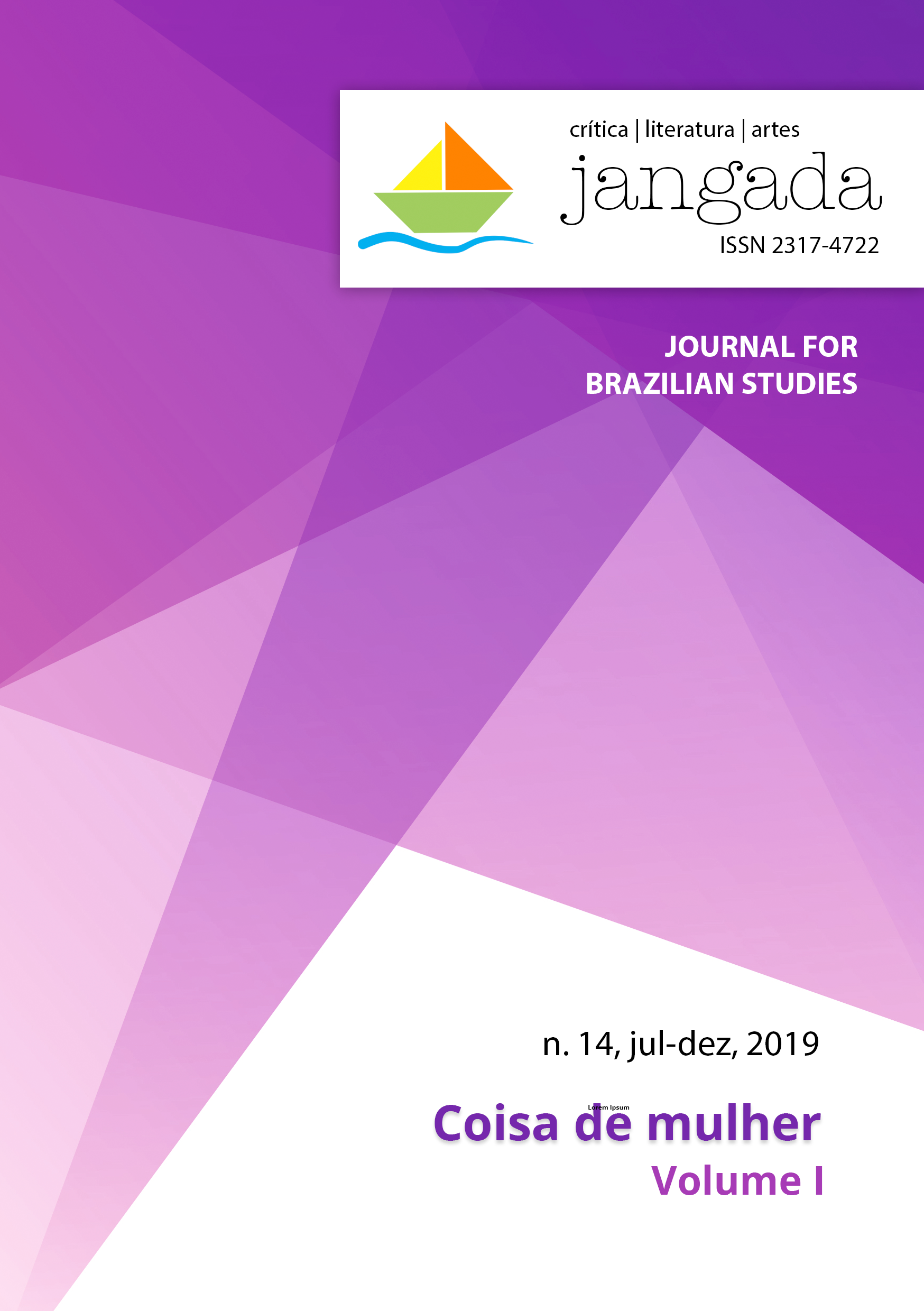Ópera de mulher: projeto de encenação e interpretação musical
DOI:
https://doi.org/10.35921/jangada.v1i14.231Keywords:
ópera, teatro, séc. XIX, soprano, construção da personagem, estados emocionaisAbstract
In the performance of a sung musical piece, in particular, an opera, the singer-actor plays a decisive role in the transmission, not only of the informative components of the musical and literary text but also of the emotional states of the characters, through non-verbal indicators or markers. In this article we present a proposal of staging project and the techniques we use to support the project theoretically. This is the interpretation of ten female soprano characters from 19th century Italian operas, composed of two arias by five Italian composers: Lucilla: “Sento talor nell'anima” [Rossini, La scala di seta (1812)]; Anna: “Giusto Ciel in tal periglio” [Rossini, Maometto II (1820)]; Norma: “Casta Diva” [Bellini, Norma (1831)]; Elvira: “Qui la voce sua soave… vien diletto” [Bellini, I Puritani (1835)]; Marie: “Ciascun lo dice” [Donizetti, La Figlia del Reggimento (1839)]; Rita: “E’ lindo e civettin questo caro alberguccio” [Donizetti, Rita (1841)]; Gilda: “Tutte le feste al tempio” [Verdi, Rigoletto (1850)]; Oscar: “Volta la Terra...” [Verdi, Un Ballo in Maschera (1859)]; Anna: “Se come voi piccina io fossi” [Puccini, Le Villi (1884)]; Musetta: “Quando men vo” [Puccini, La Bohéme (1895)]. The show lasts approximately 45 minutes and, for the arias' performance, we paid careful attention to the emotional states of each of the characters, as well as the scenography and the props.
With this project, we concluded that, although vocal and technical can be well-executed, it is not possible to perform a correct interpretation of an aria from a dramatic point of view without previously knowing the character, its personality and, especially, the emotional states present in each one of the moments.
Downloads
References
AMARAL, Ana Maria. O ator e seus duplos: máscaras, bonecos, objetos. São Paulo: Editora SENAC, 2002.
ARAÚJO, José Manuel da Silva. Canto e Emoção - indicadores emocionais não verbais na execução do discurso musical cantado. Tese de Doutoramento. Aveiro. Universidade de Aveiro, 2012.
BARBOSA, Pedro. Teoria do Teatro Moderno: A hora zero. Porto: Edições Afrontamento, 2003.
CABRAL, Carlos. Manual de Encenação. Lisboa: INATEL, 2006.
COSTA, J. Almeida & MELO, A. Sampaio. Dicionário da Língua Portuguesa. Porto: Porto Editora, 2005.
MATOS, Luís de. Manual de Objectos de Cena. Lisboa: INATEL, 2008.
MAYS, Desirée. Opera unveiled 2012. Opera Unveiled Series, vol. 14. Santa Fe: Santa Fe Opera, 2012.
PAVIS, Patrice. Dicionário de Teatro. São Paulo: Editora Perspectiva, 2005.
SIMÕES, Edson (2010): “A construção da personagem no teatro pelo olhar da psicologia social”. Encontro: Revista de Psicologia, vol. 13, n.o 19, p. 33-53.
THAMM, Robert A. “The Classification of Emotions”. In: STETS, Jan E. & Jonathan H. TURNER (eds). Handbook of the Sociology of Emotions. New York: Springer, p. 11-37, 2006.
VIANA, Isabel. A Personagem Feminina em Óperas do Romantismo Italiano: estados emocionais em dez árias para soprano. Dissertação de Mestrado. Aveiro: Universidade de Aveiro, 2012.
VIANA, Isabel. “Comunicação não verbal e expressões faciais das emoções básicas”. In: Revista de Letras, 13, p. 165-181, 2014.
VIANA, Isabel. “O papel da mulher na ópera italiana do século XIX”. In: Jangada: crítica, literatura, artes, 12 (Vozes d’Além-Mar / Voices Beyond the Sea), p. 138-157, 2018a.
VIANA, Isabel. “Métodos de Construção da Personagem nas Artes Performativas”. In: SOARES, Maria Luísa, Natália AMARANTE, Daniela FONSECA, Sónia COELHO & Susana FONTES (eds). (Co)Insistências: Estudos em Letras, Artes e Comunicação. Vila Real: Centro de Estudos em Letras, p. 121-132, 2018b.








